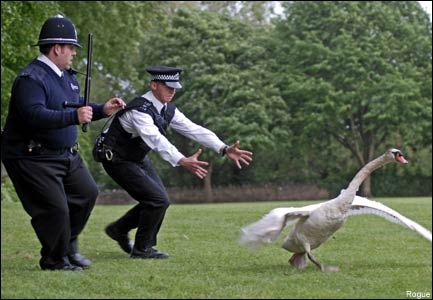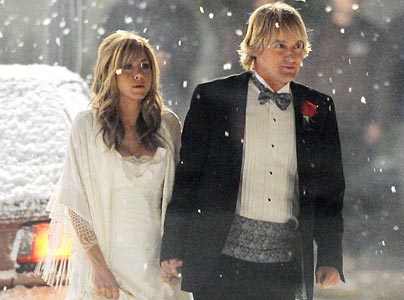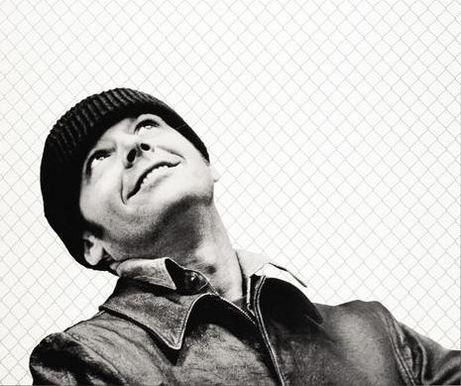Halloween (1978)
John Carpenter
The first two minutes of this film (the amount we are given for our opening) were simply on screen credits and production companies in front of a Halloween pumpkin. Though too long for our own work, the 2 minutes still anchors at the genre of the film. Halloween is very typically associated with evil and therefore the horror genre. This is further anchored by the slow eerie, non-diagetic sound we hear in this section.
Once the credits are over and the actual film begins, we are given exposition as to the setting by text onscreen.
An audio-bridge links us into opening of the film. The whole opening was filmed in one single take using a steadi cam (a similar technique was used in Orson Welles’ 1958 thriller “Touch of Evil”. The advantages of using a POV shot for the opening murder scene, is that it adds to the horror as the audience are literally among the action. It also works very well when the camera is partly covered by a mask. However for our project we could not do this, as it would score us very little points for shot variation. Halloween helped redefine the horror genre and it’s stereotypes, and the techniques it used have been replicated many times in films afterward, following its success. For example, a blue filter is used which connotes a cold vibe or even the supernatural, something that should definitely be considered if the horror genre is one we want to investigate further.
Van Helsing (2000)
Steven Sommers
Van Helsing was made by Universal Studios in 2000 as an attempt to return to the roots of their success, in the horror genre. Key characters return in this film such as Dracula and Frankenstein and with the casting of X-men star Hugh Jackman, Universal created a film with commercial appeal, but unfortunately wasn’t great to watch.
The opening scene after the credits is a direct intertextual link to the scene in the original Frankenstein movie when the monster comes alive. The whole opening scene sequence is in black and white connoting the past, possibly a memory, but could also be seen again as a link to the old film, which was shot in black and white. The film introduces the iconic but very stereotypical gothic horror characters such as the vampire with the strong accent, the monster and the mad professor working against religion.
The Bride Of Chucky (1998)
Ronny Yu
In the opening shot a blue filter (a common trait of the genre) helps to instantly signify the horror theme. Also the use of the flag adds exposition to the setting, anchoring it is located in the US. Other stereotypical features are used to signify horror, such as the night time setting, and thunder, rain, and lightning, all connoting a negative mood. Also interestingly the opening shot is tilted slightly, again connoting things are not quite right.
The quick cut editing in this opening matches the idea of lightning, and many different shot types are used within the sequence. Other key traits of the horror genre are used such as the false scare (then real scare), and later the blonde woman being used to serve purpose to the male gaze.
COMEDY
Hot Fuzz (2007)
Ed Wright
It has a long take establishing shot which eventually reveals our central protagonist. The extreme close up of his badge signifies his position on the police team, and already a comedy element is connoted from the picture on the badge. As it is a hybrid genre film of action/comedy we can expect the target audience to be younger and this can be sgnified from the very quick cuts, a technique often used in action films. They quick cuts also allow us to see the series of training this character has done, very quickly. Again it is a technique often used in action films, but here comical apects are used to signify the genre. A narrative voice over adds exposition to the film as well. The film already suggests at the use of use of stereotypes, as our central protagonist is a male policeman.
Hot Fuzz (2004)
Ed Wright
Another hybrid film from Edgar Wright, this time a zom-rom-com. The opening scene again reveals our central protagonist to us tightly framed, but as well other lesser characters. The scene has lots of mise-en-scene used to establish the location but also begin to connote personalities of the characters we meet. The use of lots of empty beer bottles begin to signify that this group like to drink a lot, which is often seen in comedy. Again the comedy aspect is put across subtley through clever framing and scripting. As the shot sequences are fairly repetitive, this helps break up the conversation with the use of the cutaway shots to another character. In the opening, the horror aspect is not signified particularly.
Napoleon Dynamite (2004)
Jared Hess
This film uses particularly good opening credits. The on screen credits such as actors, producers, director etc. are genreally just plain and simple in most films, but this film is more creative in that the titles appear made out of food. This credits sequence is also fairly long, so wouldn't neccersarily be able to be replicated in one of our films, although we can use a more concise version.
The opening scene gives us very little insight into the plotline for the film as a whole. It reveals our central protagonist as a stereotypical geek with the use of mise-en-scene such as glasses, ginger hair, high trousers etc. The shots themselves are also interesting, as they appear on screen almost comic strip like with the very strong, still framing.
Anchorman (2004)
Adam McKay
Another comedy with an interesting title sequence, Anchorman signifies almost a documentary style film. The opening scene reveals the central protagonist as the camera always focuses on him, and the voiceover is used to add exposition and cnhor his importance.
The opening scene appeals to a wide span of audience. On one hand it uses 70's style appearance and mise-en-scene connoting an older audience, but at the same time the humour is simple and unsubtle, connoting it is aimed at youth. The comedy aspect becomes apparent when he refers to himself as "The Balls", adding exposition to this character's self belief and attitude.
ROM-COM
Marley & Me (2008)
David Frankel
Rom-Coms have very clear codes and conventions, and some of these are seen from the opening of Marley & Me. The film starts with a centrally framed character who we believe to be our central protagonist. The film cuts to a different character, which the voiceover anchors through exposition to be the actual central protagonist. At this point the music and overall mood has also changed. The frame is paused as the voiceover speaks, to give an almost photo-like impression. The genre convention of weddings is also used, introducing our second character, and anchoring these two as being a couple. The characters in the opening seem to follow the stereotype of a general American couple. Normally in Romantic Comedies we see a love triangle develop, and the opening here and the film posters/dvd covers etc. could signify that triangle to hereby consist of the man, his wife and his dog.
Where The Heart Is (2000)
Matt Williams
Like most Rom-Com's the film is based on a novel. We are given exposition the setting through the dialogue, connoting a Southern US setting, and also a "Redneck" American. This unpositive stereotype suggests a younger audience, but possibly only an older audience would actually pick up on what stereotype was being used.
The use of the audiobridge of the dripping sound from the car, suggests an importance to what is shown onscreen.
ACTIONThe use of the audiobridge of the dripping sound from the car, suggests an importance to what is shown onscreen.
RockNRolla(2008)
Guy Ritchie
This film also makes use of the voiceover to add exposition. The voice of the central protagonist is a Southern, London accent but unlike those heard in Rom-Coms, reveals the character to be working class. The very quick cuts instantly begin to signify the action genre, and a younger audience.
The title credits for this film are animated, again suggesting a younger audience and this is anchored by the guitar music, again signifying an action film. The scene after the credits is a self contained narrative, which adds instant insight into the characters and situation. The scene also revelas a possible antagonist as well as protagonist, showing from the feet upwards stressing the importance of his identity and wealth.











No comments:
Post a Comment